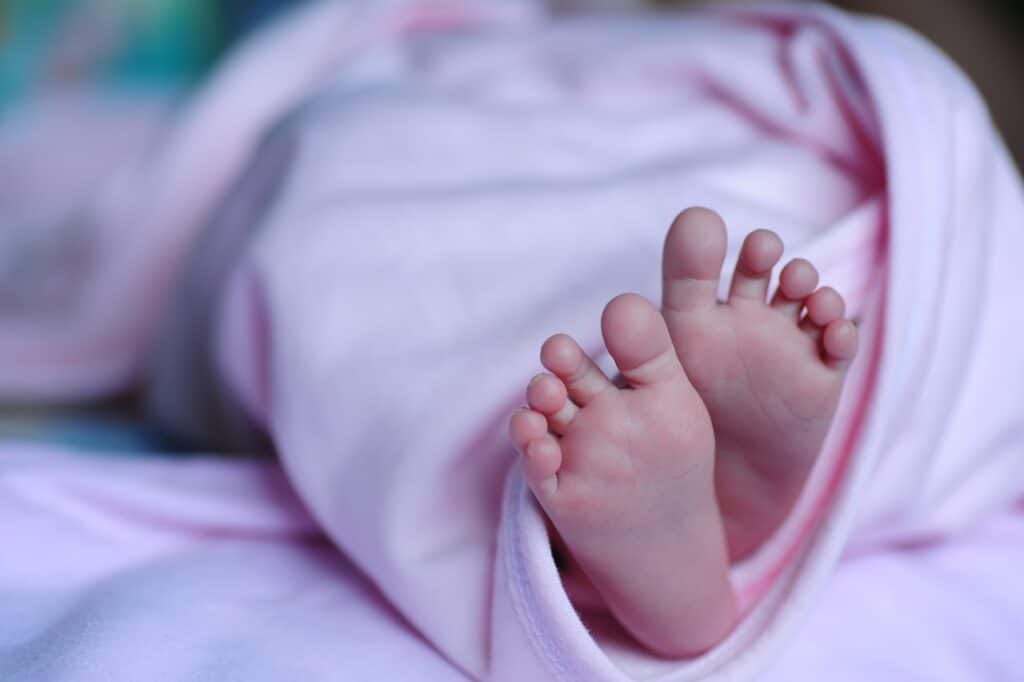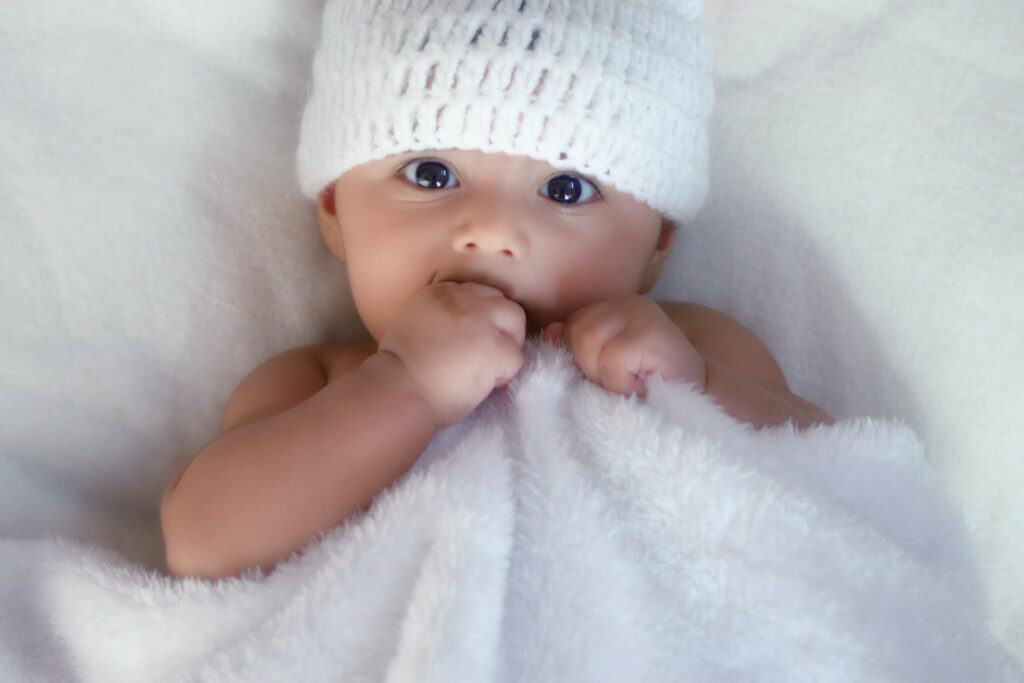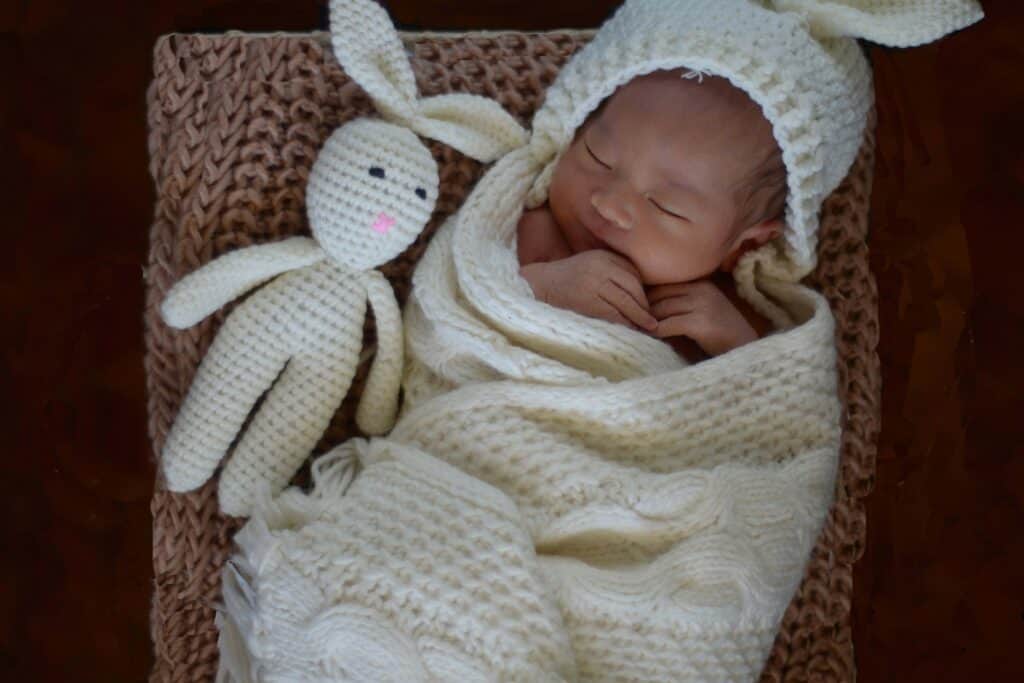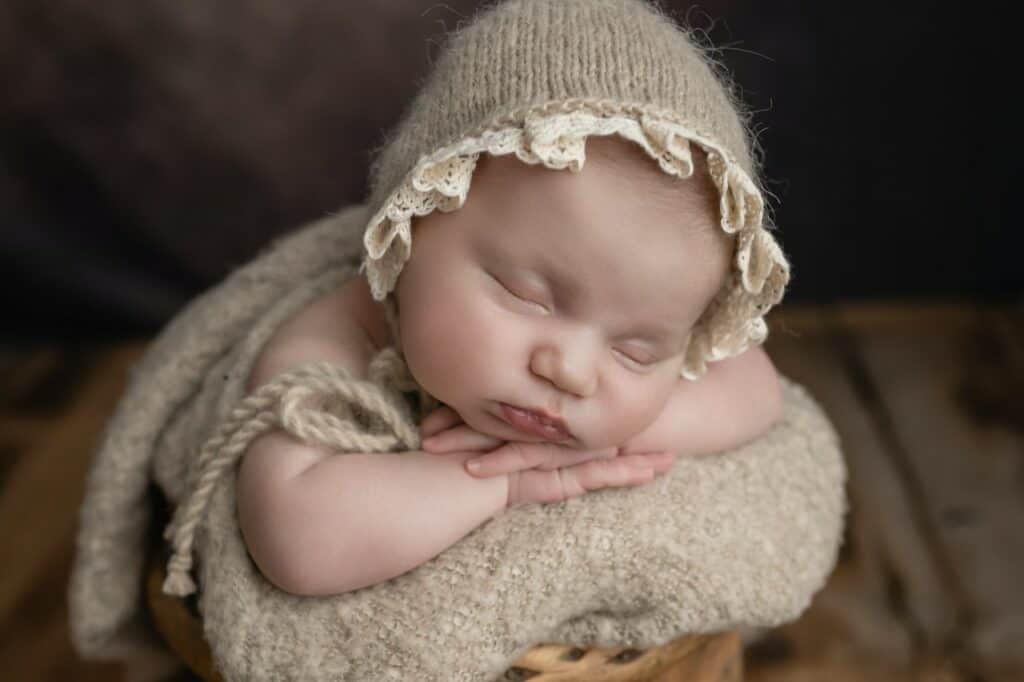Baby blankets are an essential item for new parents and their babies. They provide warmth, comfort, and security to newborns and young children. However, with so many different sizes and types of baby blankets available, it can be overwhelming for parents to choose the right one for their child.
Understanding Baby Blanket Sizes is crucial when it comes to choosing the right blanket for your baby. Baby blankets come in a variety of sizes, from small receiving blankets to larger crib blankets. It is important to choose a size that is appropriate for your baby’s age and needs. A blanket that is too small may not provide enough warmth, while a blanket that is too large may pose a safety risk for younger babies.
Key Takeaways
- Choosing the right size of baby blanket is crucial for your baby’s safety and comfort.
- Baby blankets come in a variety of sizes, from small receiving blankets to larger crib blankets.
- It is important to choose a blanket that is appropriate for your baby’s age and needs.
Understanding Baby Blanket Sizes
When it comes to buying a baby blanket, it’s important to know the different sizes available to ensure you get the right one for your needs. Here’s a breakdown of the most common baby blanket sizes and what they’re typically used for.
Average Baby Blanket Size
The average baby blanket size is around 30×30 inches. This size is perfect for swaddling newborns and can also be used as a receiving blanket. However, keep in mind that babies grow quickly, so this size may not last very long.
Baby Blanket Size Chart
A baby blanket size chart can be a helpful tool when trying to determine what size blanket to buy. Here’s a general guide to baby blanket sizes:
| Blanket Type | Size |
|---|---|
| Receiving | 30×30 inches |
| Swaddle | 40×40 inches |
| Crib | 45×60 inches |
| Toddler | 60×45 inches |
Crib Blanket Sizes
Crib blankets are typically larger than receiving blankets and are designed to fit a standard crib mattress. The average size of a crib blanket is 45×60 inches. This size allows the blanket to tuck in around the mattress, keeping the baby snug and warm.
Bassinet Blanket Size
Bassinet blankets are smaller than crib blankets and are designed to fit a bassinet mattress. The average size of a bassinet blanket is 30×36 inches. This size allows the blanket to tuck in around the mattress, keeping the baby snug and warm.
Swaddle Blanket Size
Swaddle blankets are designed to wrap around the baby snugly, providing a sense of security and comfort. The average size of a swaddle blanket is 40×40 inches. This size allows for plenty of room to wrap the baby up while still being easy to handle.
Crochet Baby Blanket Size
Crochet baby blankets can come in a variety of sizes, depending on the pattern and yarn used. However, a popular size for crochet baby blankets is 36×36 inches. This size is perfect for a small blanket that can be used for swaddling or as a security blanket.
Conclusion
Understanding baby blanket sizes can help you choose the right blanket for your needs. Keep in mind that these sizes are just averages and may vary depending on the brand and style of the blanket.
Types of Baby Blankets
When it comes to baby blankets, there are many different types to choose from. Here are some of the most common types of baby blankets:

1. Swaddle Blanket
Swaddle blankets are designed to wrap tightly around a baby, providing a cozy and secure feeling. They are typically made from lightweight, breathable fabric, and are often used to help calm a fussy baby and promote better sleep.
2. Receiving Blanket
Receiving blankets are usually the first type of blanket that a baby is wrapped in after birth. They are typically made from soft, lightweight fabric and are used to swaddle the baby or provide a layer of warmth.
3. Crib Blanket
Crib blankets are designed to fit a standard-sized crib mattress and are usually made from thicker, more durable fabric than receiving blankets. They are often used as a top layer on a baby’s bed, providing warmth and comfort.
4. Stroller Blanket
Stroller blankets are designed to be used while on-the-go, and are often made from lightweight, easy-to-clean fabric. They can be used to keep a baby warm in a stroller or car seat, or as a playmat on the ground.
5. Security Blanket
Security blankets are often small, soft blankets that a baby can carry around with them for comfort. They are usually made from a soft, plush fabric, and can be a source of comfort for a baby or toddler.
6. Multi-Use Blankets
Some baby blankets are designed to be used in multiple ways. For example, a blanket might be designed to be used as a swaddle, a stroller blanket, and a playmat all in one. These types of blankets can be very versatile and convenient.
7. Toddler Blankets
As a baby grows into a toddler, they may need a larger blanket to provide warmth and comfort. Toddler blankets are typically larger than baby blankets and are made from more durable fabric.
8. Bassinet Blanket
Bassinet blankets are designed to fit a smaller bassinet or cradle, and are usually made from lightweight, breathable fabric. They can be used to swaddle a newborn or provide a layer of warmth.
9. Activity Blankets
Activity blankets are designed to be used as a playmat for a baby, and often feature different textures, colors, and patterns to stimulate a baby’s senses. They can be a great way to promote tummy time and encourage a baby’s development.
10. Lovey Blankets
Lovey blankets are similar to security blankets, but are often smaller and feature a stuffed animal or other soft toy attached to the blanket. They can be a source of comfort and entertainment for a baby or toddler.
Material Considerations
When it comes to baby blankets, the material used is an important consideration to keep in mind. Different materials have varying properties that can affect the comfort and safety of the baby. Here are some of the most common materials used for baby blankets:

1. Cotton
Cotton is a popular choice for baby blankets due to its softness, breathability, and durability. It is also hypoallergenic, making it a great option for babies with sensitive skin. Cotton blankets can be easily washed and dried, and they come in a range of colors and patterns.
2. Yarn
Yarn is another common material used for baby blankets. It can be made from a variety of fibers, including wool, cotton, and acrylic. Yarn blankets are often handmade, which makes them unique and special. They can be soft and cozy, but may not be as durable as other materials.
3. Wool
Wool is a warm and cozy material that is great for cooler temperatures. It is naturally flame-resistant and moisture-wicking, which can help regulate the baby’s body temperature. However, wool can be itchy and may require special care when washing.
4. Flannel
Flannel is a soft and warm material that is perfect for colder weather. It is often made from cotton or wool and has a fuzzy texture. Flannel blankets are easy to care for and come in a variety of colors and patterns.
5. Cotton Muslin
Cotton muslin is a lightweight and breathable material that is perfect for warmer weather. It is soft and gentle on the baby’s skin and can be easily washed and dried. Muslin blankets come in a range of colors and patterns and can be used for swaddling or as a stroller or nursing cover.
6. Fleece
Fleece is a soft and cozy material that is perfect for colder weather. It is often made from polyester and is lightweight and durable. Fleece blankets are easy to care for and come in a variety of colors and patterns.
When choosing a material for a baby blanket, it is important to consider the baby’s needs and preferences, as well as the climate and season. With so many options available, it is easy to find a blanket that is both comfortable and safe for the baby.
Baby Blanket Safety
When it comes to baby blankets, safety should always be a top priority. Here are some tips to keep in mind:

- Use a tight-fitting sheet: Make sure the sheet on your baby’s bed fits snugly. Loose sheets can become a suffocation hazard if they cover your baby’s face.
- Avoid soft bedding: Soft bedding, such as pillows, comforters, and stuffed animals, should not be placed in your baby’s sleeping area. They can increase the risk of suffocation or SIDS.
- Skip the crib bumpers: While crib bumpers were once thought to prevent babies from getting their limbs stuck in the crib slats, they are now considered a safety hazard. They can pose a suffocation risk if a baby’s face becomes pressed against them.
- Follow safe sleep guidelines: Always place your baby on their back to sleep, on a firm and flat surface. Keep the sleeping area free of any items that could pose a suffocation risk.
By following these guidelines, you can help ensure that your baby’s sleeping environment is safe and secure.
Choosing the Right Size for Different Ages
When it comes to choosing the right size of baby blanket, it’s important to consider the age of the child. Each age group has different needs and preferences, so it’s essential to choose a blanket that will provide the right amount of comfort and warmth.
1. Newborn
For newborns, swaddling is a common practice that helps them feel secure and calm. Swaddling blankets should be large enough to wrap around the baby snugly, but not too tight. A typical size for a swaddling blanket is around 40 inches by 40 inches.
2. Infant
As babies grow, they begin to move around more and require more space. An infant-sized blanket should be larger than a swaddling blanket, but not too big that it overwhelms the baby. A good size for an infant blanket is around 30 inches by 40 inches.
3. Preemie
Preemie blankets are designed for premature babies and are typically smaller than regular infant blankets. A preemie blanket should be around 18 inches by 20 inches to provide the right amount of warmth and comfort for these tiny babies.
4. Toddler
Toddler blankets are larger than infant blankets to accommodate their growing bodies. A good size for a toddler blanket is around 40 inches by 60 inches. This size allows them to snuggle up comfortably and move around freely.
5. Lovey and Security Blankets
Lovey and security blankets are smaller than regular blankets and are designed to provide comfort and security to babies and toddlers. A lovey blanket should be around 12 inches by 12 inches, while a security blanket can be slightly larger at around 16 inches by 16 inches.
In summary, choosing the right size of baby blanket is essential for providing comfort and warmth to babies and toddlers. It’s important to consider the age of the child and their specific needs when selecting a blanket size.
Creating Your Own Baby Blanket
Creating your own baby blanket can be a fun and rewarding experience, whether you’re an experienced crafter or a beginner. There are a few things to keep in mind when making your own baby blanket, including the size, pattern, and stitching.

When it comes to the size of your baby blanket, it’s important to consider the intended use. A standard baby quilt size is around 36″ x 52″, but you can adjust the size based on your personal preference. Handmade blankets can be made to any size, but it’s important to keep in mind that larger blankets may not be as practical for everyday use.
When choosing a pattern for your baby blanket, consider the skill level required. For beginners, simple patterns such as stripes or basic shapes can be a great starting point. More experienced crafters may want to try more intricate patterns, such as lace or cable designs.
The stitching used in your baby blanket can also play a role in the final product. Crochet baby blanket size can vary based on the stitch used, so it’s important to choose a stitch that will create the desired size. For example, a single crochet stitch will create a tighter, denser fabric than a double crochet stitch.
Overall, creating your own baby blanket can be a fun and rewarding experience. By considering the size, pattern, and stitching, you can create a beautiful and functional blanket that will be cherished for years to come.
Baby Blankets as Gifts
Baby blankets make great gifts for new parents and are often given at baby showers. They are a practical and thoughtful present that can be used for years to come. When choosing a baby blanket as a gift, there are a few things to consider.
First, consider the size of the blanket. A standard baby blanket size is around 30 inches by 40 inches, but there are also smaller and larger options available. It’s important to choose a size that will be useful for the parents and their baby. If they plan on using it as a swaddle blanket, a larger size may be more appropriate. If they want to use it as a stroller blanket, a smaller size may be more convenient.
Second, consider the material of the blanket. Soft and breathable fabrics like cotton or muslin are ideal for baby blankets. They are gentle on a baby’s delicate skin and won’t cause irritation. Avoid blankets made from synthetic materials which can be uncomfortable and may cause overheating.
Third, consider the design of the blanket. There are many different styles and patterns available, so choose one that reflects the personality of the parents or matches the nursery decor. Personalized blankets with the baby’s name or initials are also a popular choice.
When giving a baby blanket as a gift, it’s a good idea to include a card or note with a thoughtful message. This adds a personal touch to the gift and shows the parents that you care. Overall, a baby blanket is a practical and thoughtful gift that will be appreciated by new parents.
Related posts:
Frequently Asked Questions
What size is appropriate for a baby blanket in a crib?
A baby blanket for a crib should be at least 30 inches wide and 40 inches long. This size ensures that the blanket covers the entire mattress and keeps the baby warm and comfortable.
What is the typical size of a knitted baby blanket?
The typical size of a knitted baby blanket is around 36 inches by 36 inches. This size allows for the blanket to be easily wrapped around the baby and provides enough coverage to keep them warm.
What size should a square baby blanket be?
A square baby blanket should be at least 36 inches by 36 inches. This size allows for the blanket to be easily wrapped around the baby and provides enough coverage to keep them warm.
What size should a square baby blanket be?
A square baby blanket should be at least 36 inches by 36 inches. This size allows for the blanket to be easily wrapped around the baby and provides enough coverage to keep them warm.
What size is recommended for a toddler blanket?
A toddler blanket should be at least 40 inches by 60 inches. This size allows for the blanket to cover the entire toddler and provides enough room for them to move around comfortably.
What is the standard size for a baby quilt?
The standard size for a baby quilt is around 36 inches by 52 inches. This size allows for the quilt to be easily wrapped around the baby and provides enough coverage to keep them warm.
How big are NICU blankets typically?
NICU blankets are typically smaller than regular baby blankets, measuring around 18 inches by 18 inches. This size allows for easy handling and helps to regulate the baby’s body temperature.

Iesha is a loving mother of 2 beautiful children. She’s an active parent who enjoys indoor and outdoor adventures with her family. Her mission is to share practical and realistic parenting advice to help the parenting community becoming stronger.
